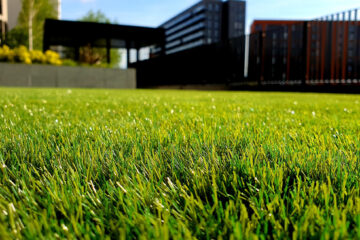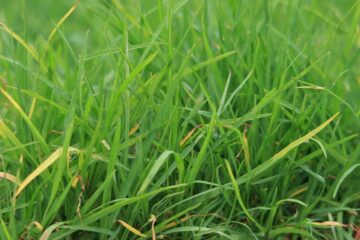Whether you’re new to lawn care or an experienced landscaper, spring is the perfect time to start thinking about how to improve your lawn. Whether it’s been a few years since your last mow or you’re just looking for ways to keep up with the latest trends in landscaping, here are ten tips that will help you get started on the right foot this year:
Mow your lawn more often.
Mow your lawn more often in the spring. Mowing your lawn too infrequently can lead to dead patches and an uneven appearance, so make sure you’re keeping up with things.
Mow your lawn less often in the summer. If you’re mowing every week during this hot season, it may be time to rethink how often you should be working on this task–you could end up damaging some blades of grass if they don’t have enough time to grow back before being cut again!
Mow even less frequently once fall rolls around (or not at all). Once temperatures drop into cooler territory and leaves start falling off trees, there’s no need for frequent mowing anymore; instead focus on keeping up with watering if necessary so that plants don’t dry out completely over winter months when there isn’t enough rain or snowfall hitting ground surfaces.”
Fertilize your lawn regularly.
Fertilize your lawn regularly.
- How often? A lawn should be fertilized once a month from April through August, and once every two weeks from September through March.
- How much? Use 1/4 cup of fertilizer for every 1,000 square feet of grass (you can buy this at any garden store). Spread the granules over the entire area in a single layer about 6 inches wide and work them into the soil with a rake or broom until they’re evenly distributed throughout your lawn.
- Type of Fertilizer: For springtime growth, use an organic fertilizer such as granular organic fertilizer or liquid fish emulsion; these will provide nutrients like nitrogen that help grass grow strong roots as well as leaves and stems. If you want thicker blades of grass but don’t want to wait until fall when natural rainfall provides enough moisture for healthy growth–or if your climate is very hot during summer months–use synthetic nitrogen products instead; these come in pellet form which makes watering easier because no runoff occurs when watering time is over!
Water deeply and less frequently.
One of the best ways to keep your lawn healthy this spring is to water deeply, but less frequently. Deep watering encourages deep roots, which are better able to survive drought conditions.
For example: If you’re watering once every seven days and using an irrigation system that delivers 1/2 inch per zone (or 6 inches total), then you should increase the time between watering by one hour each week until you reach 12 hours between each watering session. This will give grass enough time for its roots to grow deeper into the soil before needing another drink of water. It also helps prevent shallow-rooted weeds from taking over!
Weed often, as weeds use nutrients from the soil that could go to your lawn if allowed to grow unchecked.
Weeds are a big problem in lawns. They use nutrients from the soil that could go to your lawn if allowed to grow unchecked. Weeds can be controlled by mowing and watering, but herbicides are also an option for killing weeds.
Remove clippings from the mower before bagging them or placing them in a compost bin.
As you mow, don’t just throw the clippings in the bin or bag them for disposal. Instead, compost them and use them as fertilizer for your lawn (or garden). This will help keep your soil healthy and prevent it from becoming compacted.
If you’re not sure how best to compost grass clippings, check out our guide here!
Be sparing with the nitrogen fertiliser. If you want more green growth in the spring, add phosphorus instead.
Don’t over-apply nitrogen fertiliser; it will only encourage a bunch of fast-growing greens that you don’t want in your lawn. If you want more green growth in the spring, add phosphorus instead.
Fast-growing grasses are those that have lots of leaf blade per square inch. They make for an attractive lawn when young but tend to get very coarse and tough as they mature. Slow-growing grasses produce fewer leaves per square inch than fast-growers do but are much less prone to disease problems. Their dense root systems absorb nutrients more efficiently from deeper down within soil layers where these nutrients often collect over time – especially if you have clay soil like I do!
Keep on top of your gardening with our free online journal
Our free online tool allows you to organise your ideas and garden plans. It can help you be as efficient as possible in the garden.
Sign up now

